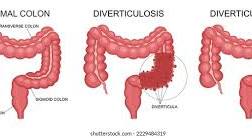INTRODUCTION
Health is wealth—a simple yet profound truth. One sickness can drain a
lifetime of savings, leaving individuals and families in distress. While modern
medicine has made remarkable strides in diagnosing and treating diseases, many
health conditions continue to defy medical solutions, pushing us to explore
alternative approaches.
Natural remedies have been a cornerstone of healing for centuries, long before
the advent of modern pharmaceuticals. Across cultures and civilizations, people
have relied on nature’s gifts—herbs, roots, fruits, and holistic practices—to
restore health and vitality. While this encyclopedia does not seek to undermine
the importance of medical science, it aims to complement it by shedding light
on time-tested natural solutions. It encourages further research into the power of
nature in healing, offering insights into remedies that have provided relief to
countless individuals.
Natural Remedies For Dupuytren’s Contracture
Dupuytren’s Contracture is a progressive hand condition where the
connective tissue under the skin of the palm thickens and tightens over
time, pulling one or more fingers into a bent position. While this
fibrotic condition often requires medical or surgical intervention in
moderate to severe cases, some natural remedies and supportive
lifestyle changes can help manage symptoms, reduce discomfort, and
slow the progression of the disease. These supportive strategies are
especially useful in the early stages or in mild cases. Below are practical
and accessible methods that may offer some symptom relief.
1. Hot and Cold Compresses
How it works: Alternating heat and cold can help manage pain and
improve flexibility. Heat relaxes tissues and increases blood flow,
while cold helps reduce inflammation.
Preparation: Soak a towel in warm water, wring it out, and place it on
the hand for 10–15 minutes. Follow this with a cold compress, such as
an ice pack or a bag of frozen peas wrapped in a cloth, for 5–10 minutes.
Usage: Repeat this cycle two to three times daily as needed.
Note: Always protect the skin from direct ice contact to avoid frostbite.
2. Castor Oil Massage
How it works: Castor oil contains ricinoleic acid, known for its anti-
inflammatory and analgesic properties. Massaging it into the skin
improves circulation and may ease stiffness.
Preparation: Warm a small amount of castor oil and massage it gently
into the palm and affected fingers using circular motions for 10–15
minutes.
Usage: Perform this massage daily, preferably at night to allow
absorption during rest.
Availability: Castor oil can be purchased at health food stores and
many pharmacies.
3. Turmeric
How it works: The active compound in turmeric, curcumin, has well-
documented anti-inflammatory effects that may help reduce tissue
swelling and discomfort.
Preparation: Mix 1 teaspoon of turmeric powder with a cup of warm
milk or water. Optionally, add a pinch of black pepper to enhance
absorption.
Usage: Drink this mixture once daily.
Availability: Turmeric powder is widely available in grocery stores,
spice markets, and health food shops.
4. Epsom Salt Soak
How it works: Rich in magnesium, Epsom salt relaxes muscles and
may reduce pain and tightness in the hand.
Preparation: Add 1–2 cups of Epsom salt to a basin of warm water
and soak the affected hand for 15–20 minutes.
Usage: Repeat this 3–4 times weekly for best results.
Availability: Epsom salt is inexpensive and found in most pharmacies.
5. Hand Exercises
How it works: Gentle stretching and strengthening exercises can
maintain joint mobility and prevent further contraction of fingers.
Examples:
Finger Spreads: Spread fingers apart as wide as possible and
then relax.
Palm Presses: Place palms together and press gently to stretch
fingers.
Fist Clenches: Make a soft fist and then open fingers fully.
Usage: Do these exercises 2–3 times daily, holding each position
for 5–10 seconds.
Note: Stop any exercise if it causes pain or worsens symptoms.
6. Lifestyle Changes
How it works: Minimizing repetitive strain and using ergonomic aids
can help reduce further stress on the hand.
Suggestions:
Avoid activities that involve tight gripping or repetitive hand
motions.
Use padded handles on tools and utensils.
Wear a soft hand splint at night to maintain finger extension.
Modify tasks to reduce hand load.
Usage: Consistent adaptation of daily routines can help delay
disease progression.
Tip: Occupational therapists can suggest specific tools and
ergonomic adjustments.
Key Consideration
Natural remedies may assist in symptom management, but they cannot
halt or reverse the fibrous tissue buildup characteristic of Dupuytren’s
Contracture. Medical options, including enzyme injections (e.g.,
collagenase clostridium histolyticum), needle aponeurotomy, or
surgical fasciectomy, remain the most effective for moderate to severe
cases. Always consult a healthcare provider or a hand specialist before
starting any new regimen.




Health is indeed a precious asset that should never be taken for granted. Natural remedies offer a holistic approach to maintaining well-being, rooted in centuries of tradition. It’s fascinating how ancient practices continue to complement modern medicine. Taking proactive steps to care for our health can prevent unnecessary financial and emotional burdens. How can we better integrate natural remedies into our daily lives for long-term benefits? WordAiApi
Thank you for reaching out to our Health Blog, its an indication that we’re doing a good job. Back to your question, How can we better integrate natural remedies into our daily lives for long-term benefits?
1. Eat foods rich in vegetables, fruits, egg, meat and fish daily.
2. Cut down on the intake of caffeine and caffeinated drinks.
3. Eat more of fibrous food such as avocados, sweet potatoes, beans, whole grains etc.
4. Relaxation and good sleep is crucial. Stress and depression worked hand in hand, always
find time to relax and have good sleep. It’s an antidote to stress and depression.
5. Daily exercises and work out is also key.
6. Daily consumption of water (5litres per day) in place of energy drink.
7. Garlic, ginger, broccoli, orange, almonds, yogurt should be taking daily.
8. Reduce the intake of alcohol.
Above all, eat food as medicine, don’t take medicine as food.